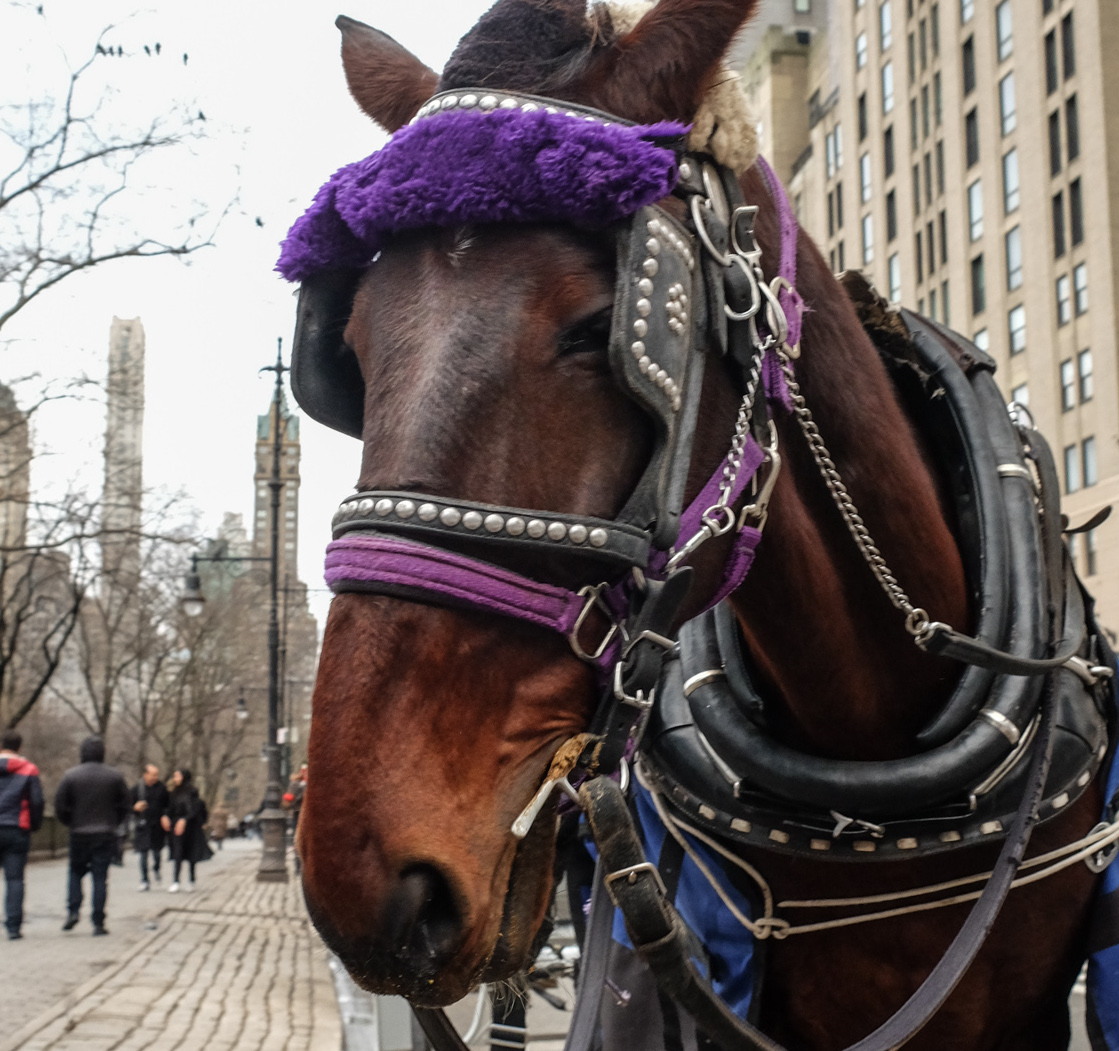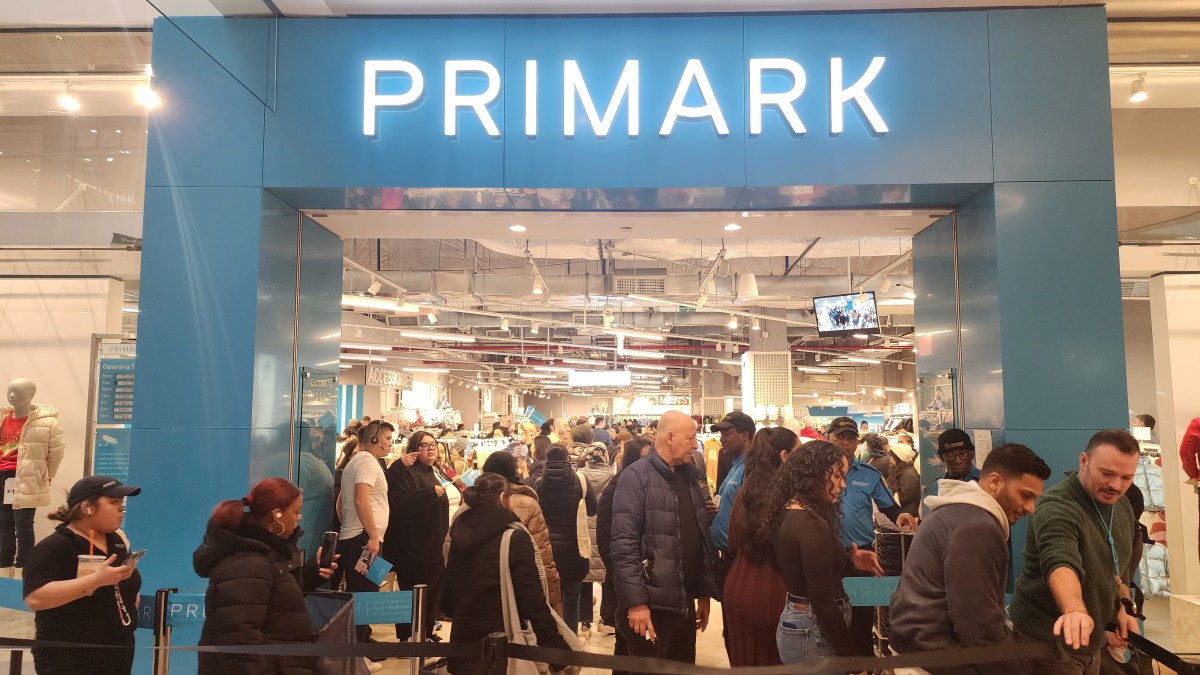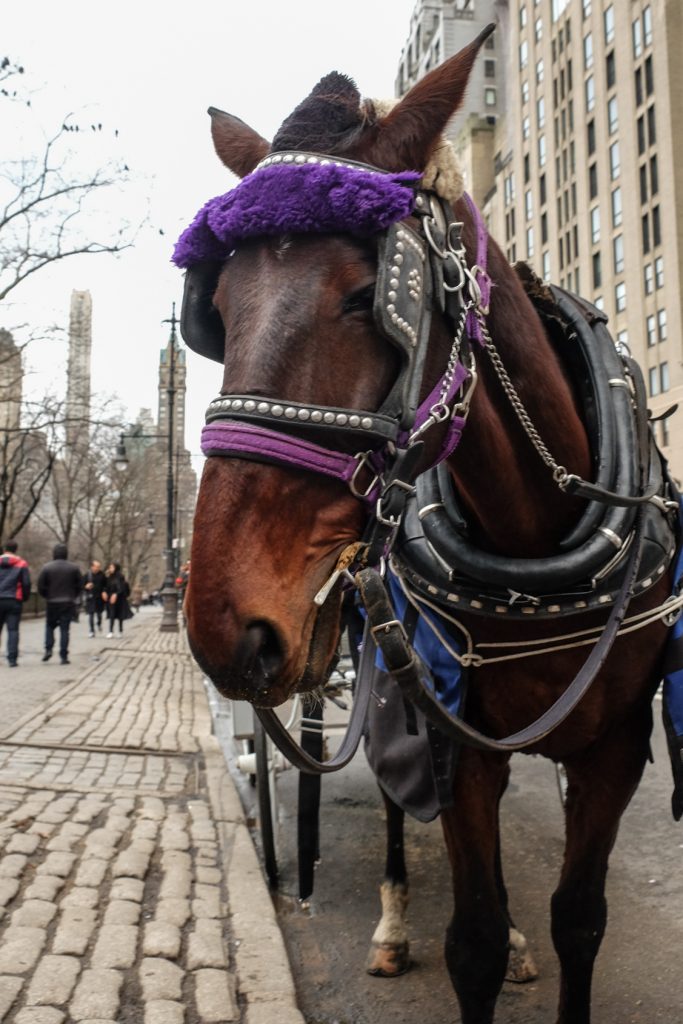
BY ALEJANDRA O’CONNELL-DOMENECH | The Central Park carriage horses will no longer pick up passengers outside of the park.
On Wed., Feb. 13, Manhattan Supreme Court Justice Arthur Engoron ruled in favor of Mayor Bill de Blasio’s push to ban horse-drawn carriages from waiting for passengers outside of the park.
Edita Birnkrant, executive director of the animal-rights group New Yorkers for Clean, Livable and Safe Streets, or NYCLASS, hailed the decision.
“This is obviously a victory for the horses and for the whole city,” she said.
While running for mayor in 2013, de Blasio received hundreds of thousands of dollars in campaign contributions from NYCLASS and made a promise to ban carriage horses on “Day One,” if elected.
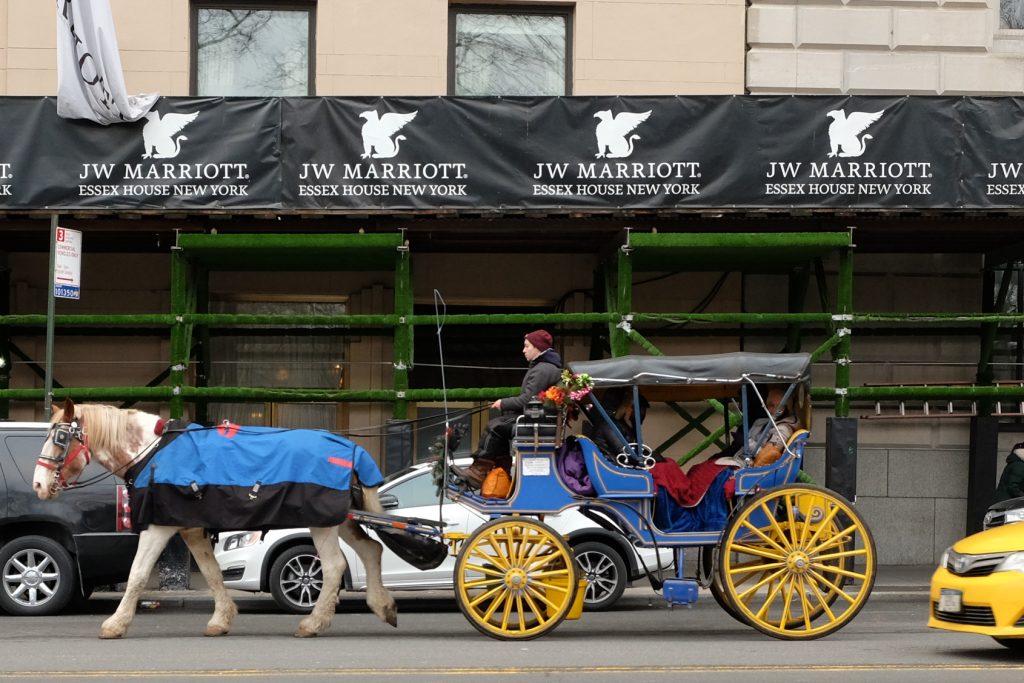
The new rules, which were proposed last August, grant the city’s Department of Transportation authority over horse-carriage pickup locations, also known as “hack lines.” The city’s Department of Health and the Department of Consumer Affairs are the agencies that actually regulate horse-drawn carriages.
D.O.T. is now constructing three pickup locations inside the park’s entrances at Seventh and Sixth Aves. and Grand Army Plaza near Fifth Ave.
But while animal-rights activists are delighted by Engoron’s ruling, horse-carriage drivers believe the new rules will makes things worse for the 200 horses in the city’s carriage industry.
According to the carriage drivers that fought against the mayor’s idea in court, relocating the horses would be detrimental to the animals’ well-being.
A horse expert, Dr. Joseph Bertone, professor of equine medicine at Western University of Health Science, weighed in with an affidavit filed Feb. 4.
“They will be stressed by their new surroundings, which will be magnified because every other nearby horse will also be stressed,” Bertone maintained.
The drivers also claim that the new hack lines are not long enough to comfortably fit 68 standing carriages — which, they say, is imperative when business is slow — and are not wide enough for two carriages to pass one another safely. The proposed hack line at Seventh Ave. also would force the horses to stand for long periods of time at a downward incline, they added.
Christina Hansen, the communications liaison for Historic Horse-Drawn Carriages of Central Park and one of the horse-carriage drivers fighting the new hack lines, described how this would be a recipe for trouble.
“The physiology that horses use to be able to sleep standing up and to rest doesn’t work if they are pointed downhill,” Hansen said.
“So, try telling that to D.O.T. when they don’t meet with you,” she added.
Hansen claims that she and other carriages drivers have already tried to meet with D.O.T. three times to explain why the new hack lines would be dangerous, but to no avail.
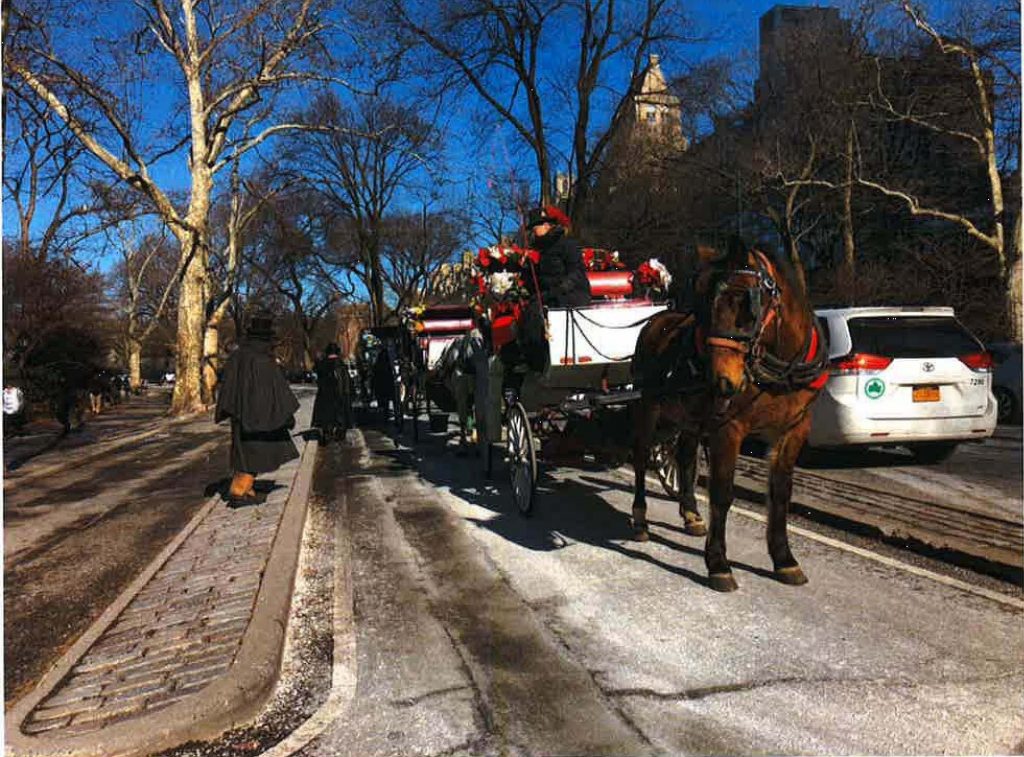
And not just the horses would be hurt by the new rules, but the passengers and drivers would be, too, according to Hansen. In court documents, carriage drivers claimed the new hack-line locations would make it difficult to pick up passengers with accessibility issues.
According to the court documents, the drivers fear that, under the new setup, they would get ticketed for working their horses for more than nine hours a day since the animals would have a harder time leaving the standing line — or would actually be stuck in line — when they are supposed to be “clocking out.”
“Their agenda is not to help the horses, it’s not to help our business, it’s not even to deal with 59th St.,” said Hansen, referring to D.O.T. and NYCLASS. “It’s [being done] because they think nobody should be taking any carriage rides at all.”
According to Birnkrant of NYCLASS, however, the areas for the new hack lines are being renovated to eliminate the conditions cited above that the drivers are complaining about, so those arguments are basically moot.
She added that the new hack lines are scheduled to be completed by Feb. 25, which is also when the carriages would start operating out of those locations. D.O.T. has not responded to this paper’s questions seeking to confirm that timetable.



